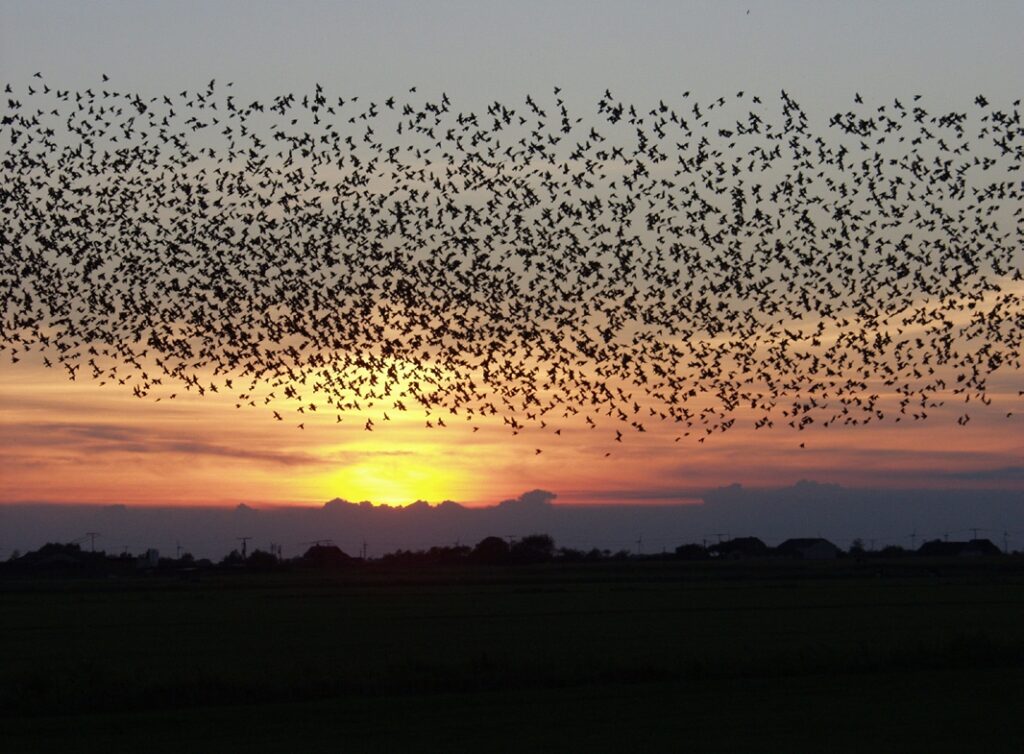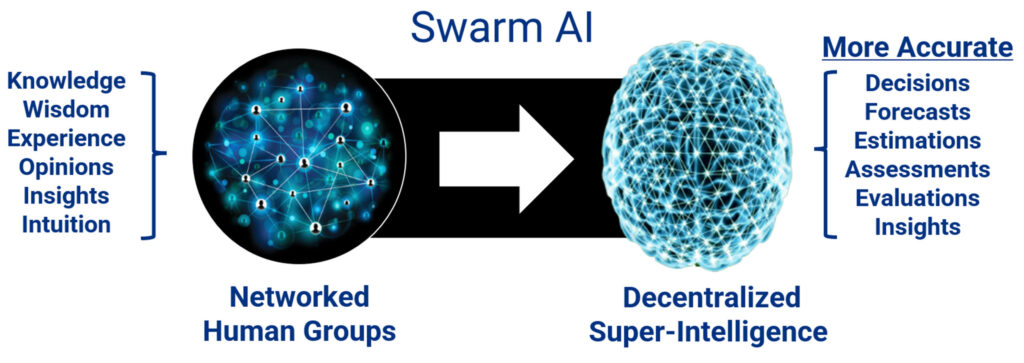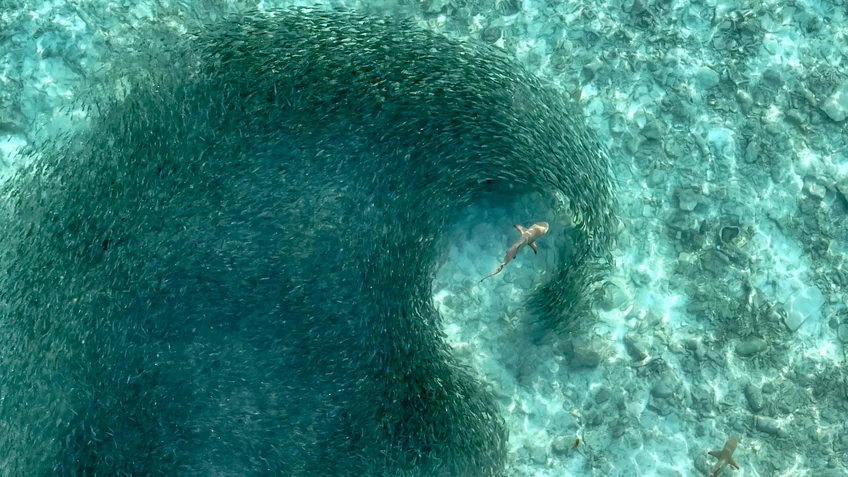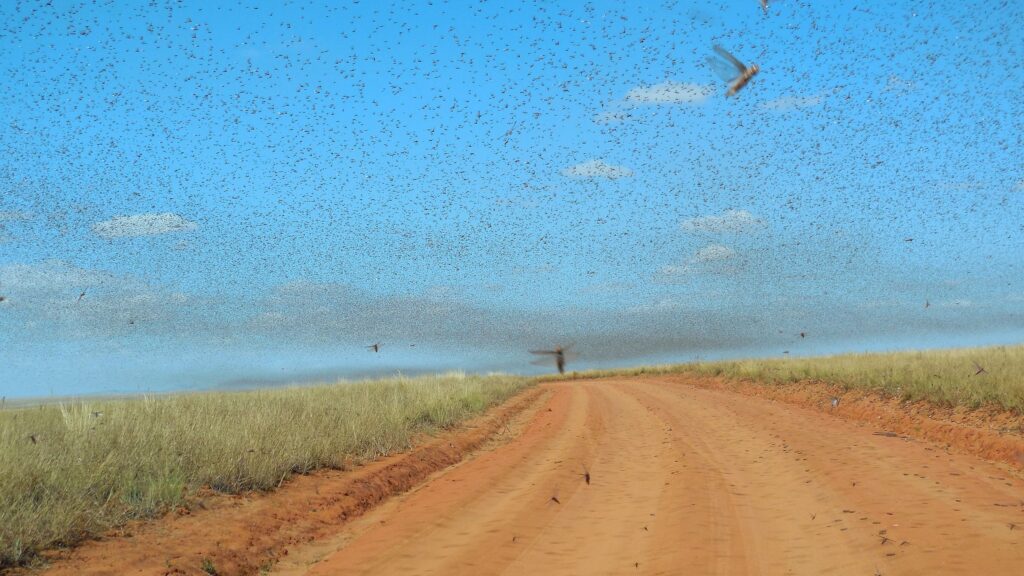
Starlings forming fascinating collective formations in the air over Tøndermarsken, in south-west Jutland, Denmark. Image: Tommy Hansen/B.A.C.
By Mariana Meneses
In collective computing, the combined power of multiple computers is harnessed to solve complex problems.
Through techniques such as parallel processing, distributed computing, and swarm intelligence, researchers are now able to tackle tasks that would be insurmountable for a single machine.
Collective computing is the subject of two upcoming conferences looking for ways to further its unprecedented advancements and efficiencies.
While collective computing is a broader term, computational collective intelligence (CCI) specifically addresses intelligent behavior arising from collective efforts. CCI emphasizes the intelligence that emerges from the collaboration and competition of many individuals, both artificial and natural. It encompasses methods for processing collective knowledge, including knowledge representation, multi-agent systems, data mining, and more.
CCI explores how groups can act intelligently as a whole, motivated by trends like the Internet of Things and swarm robotics.
In February, we discussed how collective superintelligence, inspired by swarm intelligence in nature, harnesses the collaborative power of humans through technologies like Conversational Swarm Intelligence (CSI) to enhance decision-making and problem-solving. In March, we hosted Unanimous AI CEO & Chief Scientist, Dr. Louis Rosenberg in The Quantum Feedback Loop podcast, and with his decades-long experience in virtual reality technologies Dr. Rosenberg discussed a new technological paradigm designed to facilitate a collective human superintelligence.
Louis Rosenberg on Collective Superintelligence and the Virtual Future
Called Swarm AI, it’s modelled after natural swarm intelligence among fish, bees, and other species, and aims to amplify the decision-making capacity of groups of people instead of the machine making the decisions for them.

“Unlike traditional votes, polls, or surveys, which treat each person as an isolated source of opinion data for statistical aggregation, “swarming” treats the distributed group as real-time control system, enabling all members to converge in unison on superior decisions, predictions, estimations, forecasts evaluations and assessments.” Credit: Unanimous AI.
Collective behaviour has intrigued philosophers and scientists for centuries.
The study of how individuals coordinate and act in unison within groups spans various fields, from sociology and psychology to biology and computer science.
Early philosophers like Aristotle explored the nature of human communities and social cohesion, contemplating the principles that bind societies together. Many centuries later, Sigmund Freud, a pioneering figure in psychology, investigated the dynamics of group behavior, examining how individuals’ thoughts and actions are influenced when they become part of a group. This interdisciplinary interest continues today, as researchers seek to understand the complex mechanisms that drive collective behavior in various contexts, investigating the mechanisms behind flocking birds, schooling fish, and human crowds.
One notable event this year is the 16th International Conference on Computational Collective Intelligence (ICCCI 2024), which focuses on research in this field and will take place this September in Leipzig, Germany. The ICCCI aims to provide an internationally respected forum for scientific research related to computer-based methods of collective intelligence and their applications. Topics covered include collective processing, knowledge integration, data integration, group decision making, multi-criteria decision making, consensus computing, and social networks.
Another event is SWARM2024, also occurring in September, in Kyoto, Japan. This academic event has the goal to build “a bridge between biologists and engineers who are interested in the intelligence of living things and the creation of a new academic field by integrating biology and engineering.”
The choices and factors that drive collective animal behavior are informing data science.
In the Joy of Why Podcast, by Quanta Magazine, evolutionary ecologist Dr. Iain Couzin discusses the origins of complex life and intelligence from a collective behavior perspective.
“Each individual, even if you’ve got a very complex human brain, and you’re walking around in the world, unless you have social interactions with others, or even more so, you know, build upon the cultural complexity that we inherit when we are born into our lives, then we’re very limited.” — Iain Couzin
How Is Flocking Like Computing?
Flock behaviour can be mesmerizing.

Professor Iain Couzin, University of Konstanz and Max Planck Institute of Animal Behavior. Image: University of Konstanz/Eurekalert.
The collective behavior of self-organized groups provides significant fitness advantages. While natural selection acts on individuals, cohesive group behavior can enhance the survival and reproductive success of its members, offering benefits such as increased protection from predators and improved foraging efficiency.
Dr. Couzin explains that this is akin to physical systems near phase transitions, such as water at the point of freezing, where remarkable collective properties emerge. Historical observations by Edmund Selous (1857-1934), who attributed the rapid information transfer among birds to telepathy, highlight our limited understanding of these phenomena. While telepathy is no longer suggested, tuning systems close to bifurcation points reveals extraordinary collective behaviors that, though scientifically explainable, can appear fantastical.
Limiting choices to two while increasing spatial dimensions can be the key to the puzzle.
In a 2021 paper by Dr. Couzin and colleagues, the authors reveal that animals make decisions on the move by reducing their environment to sequential binary choices, enhancing decision-making efficiency. Using experiments and virtual reality, they demonstrate that this approach is robust across various contexts, whether the options are static (e.g., in seeking refuges) or mobile (e.g., interacting with other animals). They also show that these principles apply at both individual and collective levels of biological organization.
“How do, for example, fluid flocks and fish schools move so effortlessly and so beautifully with so few collisions, and yet cars on a highway tend to struggle to have collective motion? I mean, is there something we can learn from millennia of natural selection that we can then apply to vehicles and to robots?” – Iain Couzin
Dr. Couzin explained that the brain’s representation of space diverges from two-dimensional Euclidean geometry, operating instead within a non-Euclidean coordinate system. This deviation simplifies the complexity of decision-making when faced with multiple options. By effectively warping spacetime, the brain facilitates clearer bifurcations in choices, amplifying differences between viable alternatives near decision points.
This intrinsic structure enhances the brain’s ability to navigate and make informed choices in environments with numerous possibilities.

A school of fish collectively reacts to clear a path around a predator. “These emergent properties of interacting units span systems and scales, from cells forming biological tissues, fish schools moving in synchrony, animal migrations across continents, and robot swarms.” Image: Max Plank Institute – Department of Collective Behavior.
Collective behaviour is a feature in evolution.
Last year, we featured the groundbreaking work of Dr. William Ratcliff and colleagues, who observed the rapid evolution of unicellular yeast into multicellular clusters. Their experiments demonstrated that under specific conditions, yeast evolved into “snowflake yeast,” showcasing the early steps of multicellularity. Over 600 days, these clusters grew significantly and exhibited cell differentiation, highlighting the potential for complex life forms to evolve from simple organisms. This research offers insights into how multicellularity could have independently arisen multiple times in Earth’s history.
“And so, this is one of the things I find most remarkable about collective behavior, is that even though the system properties, whether you’re a cell or whether you’re a bird, are very different, when you look at the collective action, the collective properties, the mathematics that underlie this, actually can turn out to be very similar. And so we can find these, sort of, what are called universal properties that connect these different, apparently disparate systems.” – Iain Couzin
Living as part of a self-organized group rather than as an individual offers hidden fitness advantages. These benefits stem from the collaborative efforts and shared resources within the group, which enhance survival and problem-solving capabilities. In a group, individuals can pool their strengths, compensate for weaknesses, and create a more resilient and adaptive community, ultimately leading to greater overall fitness and success. This is also the logic of collective computing.

“Swarm of locusts near Satrokala, Madagascar”. Dr. Couzin explains that locusts are normally solitary and don’t favor swarms, however their behavior changes when driven by food scarcity, causing them to collectively blanket a wide area. Credit: Iwoelbern
Collective intelligence promises significant advances for robotics.
In a paper published in November 2023, Dr. Roberto Casadei, from the Univertá di Bologna, focuses on artificial and computational collective intelligence and argues that collective intelligence “is increasingly often a design goal of engineered computational systems—motivated by recent technoscientific trends like the Internet of Things, swarm robotics, and crowd computing, to name only a few.”
Moreover, integrating principles from collective intelligence—like self-organization and emergent behavior—into deep learning offers a promising direction to address current challenges, enhancing robustness and adaptability in AI systems.
The global swarm robotics market is poised for significant growth, driven by applications such as industrial automation, distributed sensing tasks, and post-disaster relief. With major players like Exyn Technologies and Boeing leading the charge, the market is expected to expand across North America, Europe, and Asia-Pacific, leveraging advancements in artificial swarm intelligence and biological studies to enhance collective robot behaviors and efficiencies.
By studying how natural systems, from flocking birds to multicellular organisms, achieve collective behaviours, scientists are uncovering fundamental principles that inspire innovative approaches in artificial intelligence and technological design.
These insights not only inform the development of sophisticated algorithms and computational models but also highlight the potential for integrating biological strategies into engineering solutions, aiming to enhance group decision-making, problem-solving efficiency, and adaptive capabilities in complex environments.
Craving more information? Check out these recommended TQR articles:
- Race for Post-Quantum Cryptography: Will Proposed Encryption Standards Secure the World’s Data?
- What Will a Recent Quantum Leap in Time Crystal Technology Reveal About the Elusive Nature of Time?
- Adaptive Intelligence: The Power of Genetic Mutations and Neural Networks
- Citizen Action Combines With Innovative New Methods to Combat Cybersecurity Threats
- The Incredible Power of Shape: Fractals Connect Quantum Computers to the Human Body and the Cosmos



